Cultural Heritage | Carving Technique Engraves Boundless Universe on Tiny Kernels
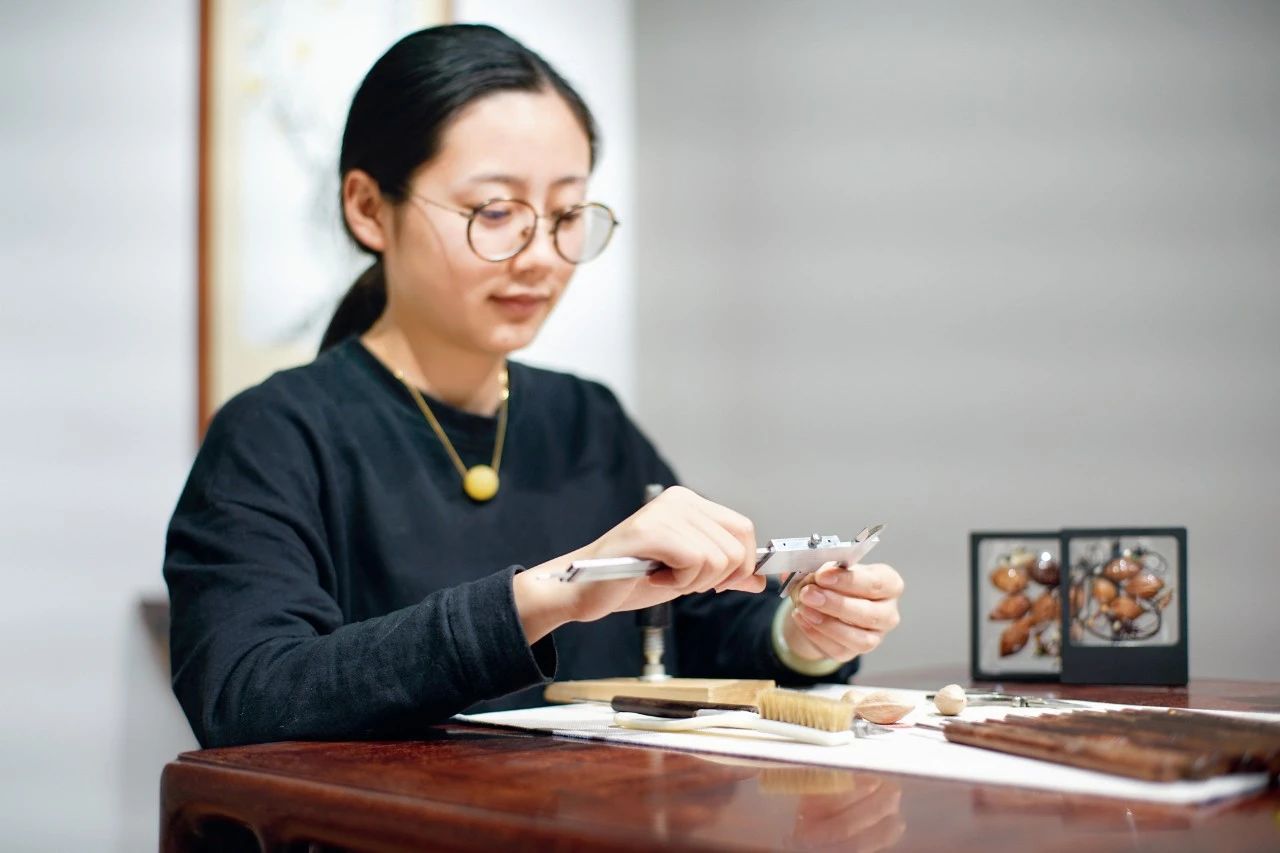
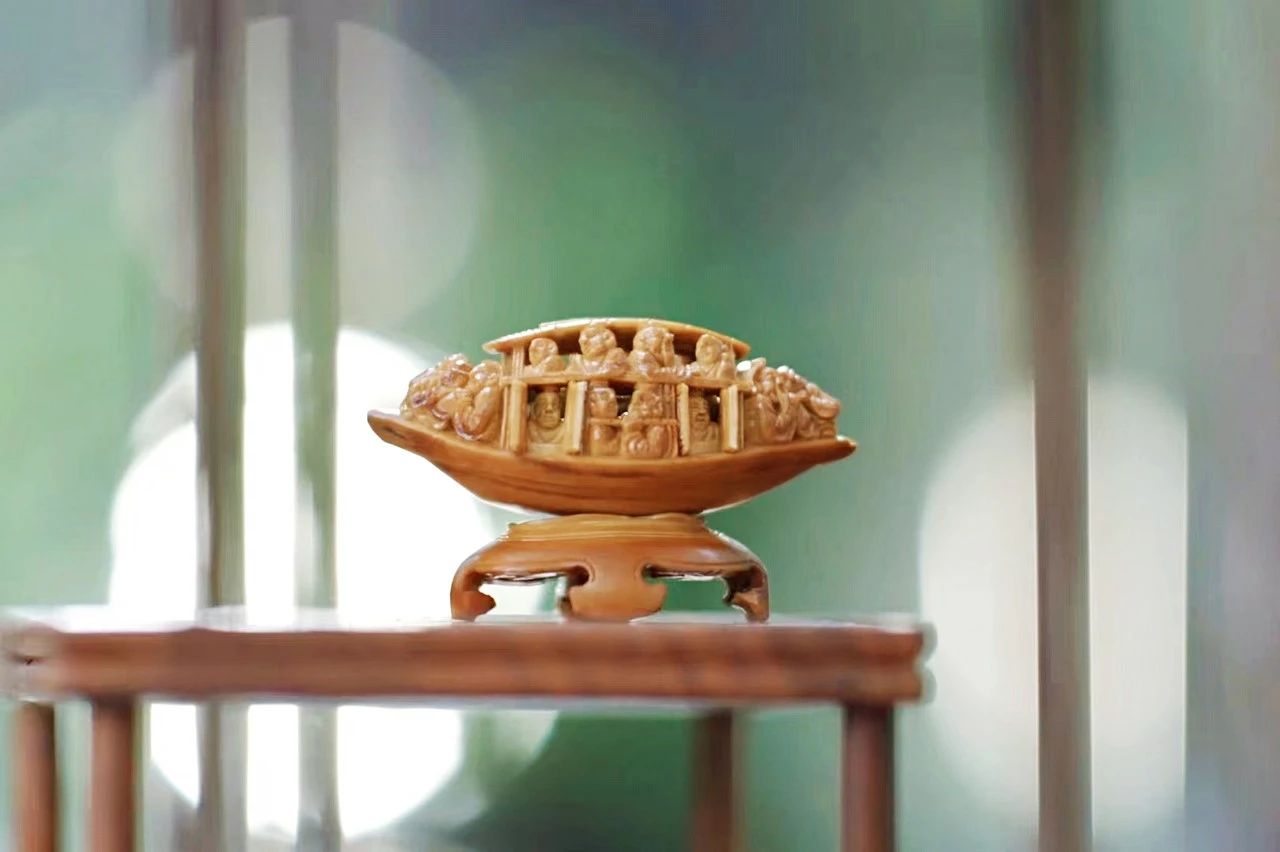
Kernel carving, which results in a traditional form of miniature sculpture, involves a type of engraving, most commonly on a walnut or the kernel of a peach, an apricot or an olive. Guangfu-style kernel carving originated in ancient times in Guangfu, a town, and Zhoushan, a village, both in Suzhou, a city in east China's Jiangsu Province. Kernel carving is recognized for the intricate, exquisite pattern engraved on such a tiny kernel.
The Story of the Kernel Carving Boat is an essay most Chinese would have read in their middle-school textbooks. The essay, written by Wei Xueyi, a scholar during the Ming Dynasty (1368-1644), vividly describes a kernel-carving work of art (an actual kernel carving of a boat), created by Wang Shuyuan, a skilled craftsman during the Ming Dynasty. The carving depicts the scene of Su Shi, a legendary poet and essayist during the Song Dynasty (960-1279), taking a boat trip to the site of the Battle of Chibi, the decisive battle fought at the end of the Han Dynasty (206 BC-220).

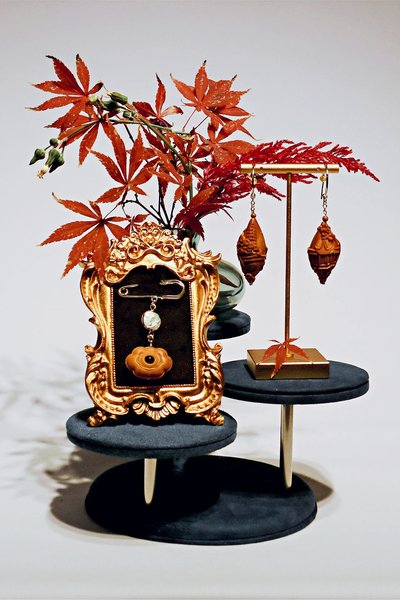
The carved boat is about three centimeters long. There are eight windows, each of which can be opened. Each window is engraved with Chinese characters. When the windows are open, one can see two delicate poles, each decorated with flower patterns. There are three figures on the boat's bow, and two figures on the stern. One can imagine just how exquisite the carved boat is!
The art of kernel carving was especially prevalent during the Ming and Qing (1616-1911) dynasties. People generally hung kernel carvings on their fans, or they wore the carvings as fashion accessories, to ward off evil spirits. The technique used to make the carvings reached its peak during that time, and kernel carvings were renowned for their exquisite designs.
During the late Qing Dynasty and the early Republic of China (1912-1949) period, Yin Genfu, a native of Zhoushan, opened a store in downtown Shanghai, where he made and sold olive-pit kernel carvings. Yin innovatively carved arhat's head into olive pits, which were from south China's Guangdong Province. He then made the carvings into bracelets. The exquisite bracelets captivated his customers. Yin developed his own carving style, and he passed his kernel-carving technique, known as the "Yin School" kernel-carving technique, down to future generations. The current Guangfu-style kernel-carving technique was derived mainly from Yin's kernel-carving technique.
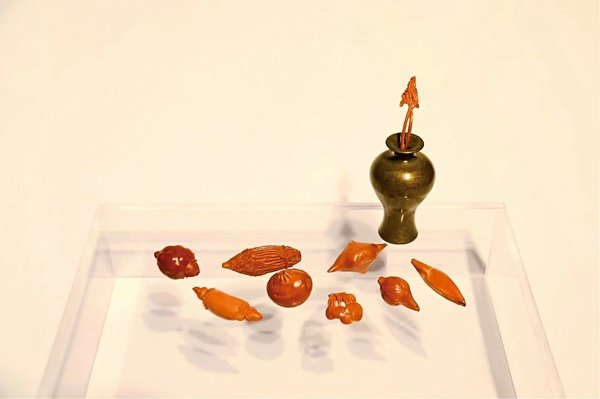
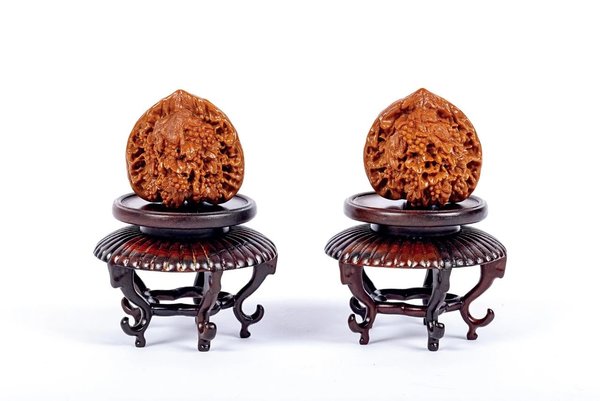
The kernels of a special type of olive, grown in Guangdong Province, have become the main raw material used in Guangfu-style kernel carving. The olive's kernels have an even color and fine texture, and they are hard and thick enough for complex carving.
Under the skilled carving of experienced artisans, images of Buddha, vivid landscapes, boats, pavilions, animals, plants, mythological figures, and human figures emerge, seemingly by magic, on the tiny olive pits. As such, kernel carving, which reveals both the boundless universe and the rich tapestry of life, has been praised as "a marvel of sculpting and a treasure of traditional arts."
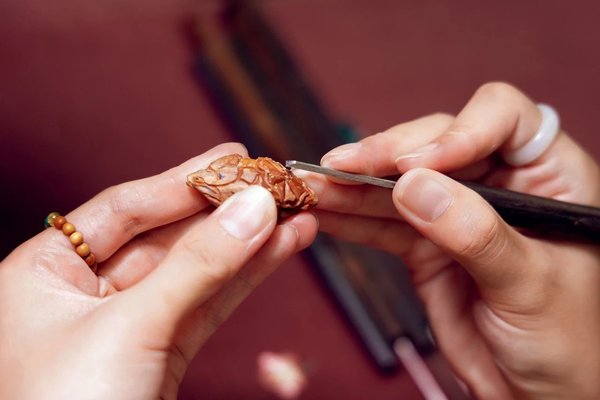
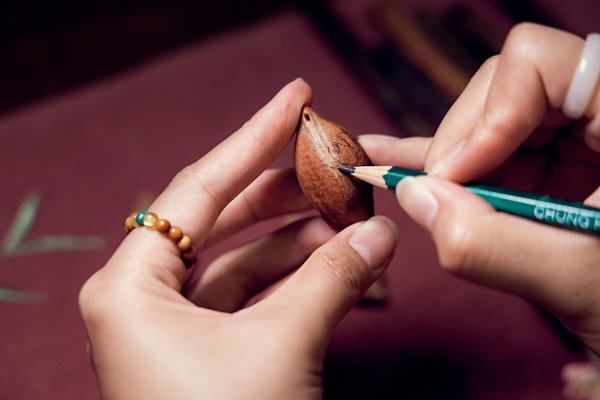
Exquisite Skills
Several steps — including revising, drawing lines, the initial carving, refining, hole drilling, cleaning and polishing — are required to carve an olive kernel. Throughout the process, the creative thinking of the artisan matters a lot. The artisan generally studies, carefully, the shapes and features of the kernels, as he/she must figure out the patterns of the carvings. Some skilled artisans take several months, or even several years, to transform the kernels into delicate works of art.
Revising the kernel is an essential step during the carving process. The artisan trims the kernel, and he/she draws patterns or lines on the kernel to capture his/her creative design. Later, the kernel begins to take shape, after the initial carving begins.
The refining step refers to the examination and refinement of the carving. Using the above-mentioned boat carving as an example, the artisan would use this step to ensure the windows and railings of the boat are functional.
The drilling, cleaning and polishing steps help improve the carving. During the cleaning step, the artisan should thoroughly remove waste, such as wood chips, produced during the carving process. The surface of the carving should be made smooth during the polishing step.
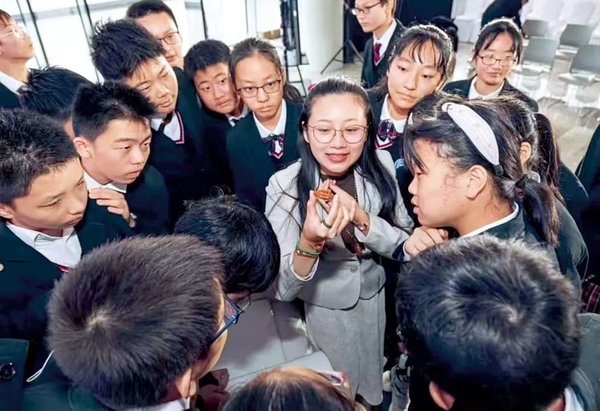
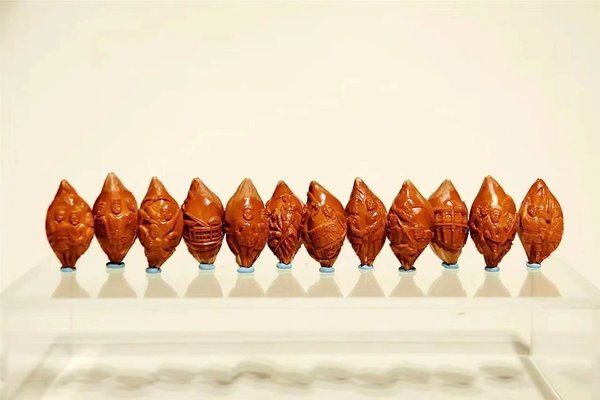
Innovation
Guangfu-style kernel carving was added to the list of China's national intangible cultural heritage in 2008. Guangfu-style kernel carving has grown in popularity in recent years, both at home and abroad. It has also become a cultural symbol of Guangfu. Local artisans have contributed to the inheritance and innovation of the kernel-carving technique.
Zhu Mengjia, a young kernel sculptor, was born in Guangfu in 1993. Zhu took an interest in kernel carving when she was a young girl. In 2014, she began studying kernel carving with Xu Zhongying, a representative inheritor of Guangfu-style kernel carving, and a master of arts and crafts of Jiangsu Province, after she graduated from Nanjing University of the Arts.
Zhu has innovatively integrated inlaying and dyeing techniques into the carving of kernels, and she has developed carvings with modern themes and fashionable elements. She has captivated young customers with her innovative carvings, which have included buttons and bookmarks.
In recent years, Zhu has given lectures in schools and communities, and she has promoted kernel carving via livestreaming. Through such initiatives, she hopes to help people, at home and abroad, learn about the history and development of Guangfu-style kernel carving.
Photos from Interviewee
(Women of China English Monthly January 2025)
Editor: Wang Shasha
Please understand that womenofchina.cn,a non-profit, information-communication website, cannot reach every writer before using articles and images. For copyright issues, please contact us by emailing: website@womenofchina.cn. The articles published and opinions expressed on this website represent the opinions of writers and are not necessarily shared by womenofchina.cn.
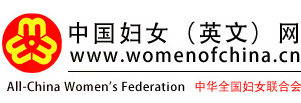
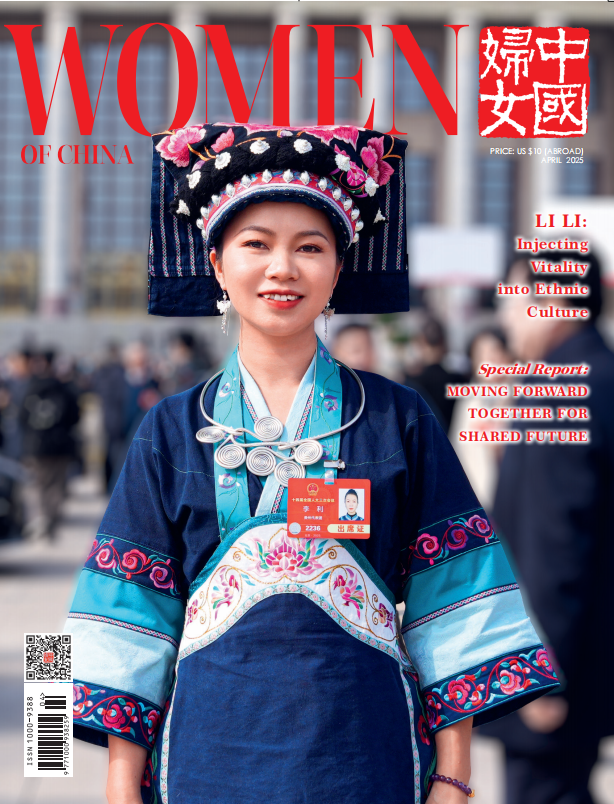






.jpg)

 WeChat
WeChat Weibo
Weibo 京公网安备 11010102004314号
京公网安备 11010102004314号